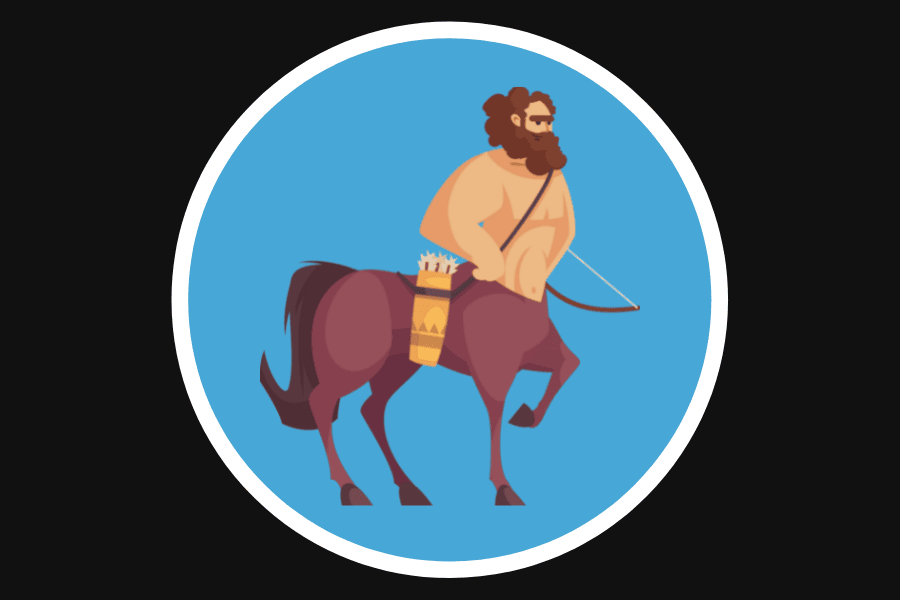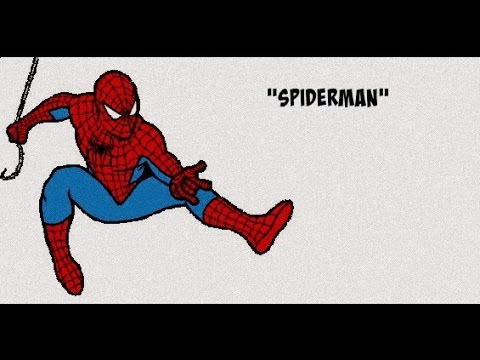Looking for some clever zoomorphism examples to inspire your writing?
Or maybe you’re just wondering what the heck zoomorphism even is?
Either way, we’ve got your back.
In today’s post, we’ll cover zoomorphism from head to tail. First, we’ll kick things off with a super-simple zoomorphism definition and share a few reasons why writers use it in their work.
From there, we’ll dive into some mind-blowing zoomorphism examples to help you crank up the wild side of your creativity.
Let’s do this.

What is Zoomorphism?
Zoomorphism is a literary device that refers to giving animal features and qualities to humans, gods, spirits, and an inanimate object (anything that’s not human).
It also includes giving the features of one animal form to another.
Why Use Zoomorphism?
Like a metaphor, zoomorphism can inject your writing with imagination and make it come to life. It adds vivid imagery and compelling descriptions of different characters, people, and objects.
Using it creates figurative language simply and naturally, giving the reader a clear view in their mind.
Let’s say you introduced a new character. Comparing the new character’s features, movements, or characteristics to an animal style helps the reader better understand the character with a few vivid words, which is challenging to achieve in strictly human-centric storytelling.
Examples of Zoomorphism in Literature

Throughout history, many authors and poets have used zoomorphism to tell their stories or create more relatable characters.
Let’s look at some of the many examples in mythology, folklore, religion, classical and current literature.
Zoomorphism Examples in The Bible
- “and the Holy Spirit descended on him in bodily form like a dove…” — Luke 3:22
- “For you have been my help. I will rejoice in the shadow of your wings.” — Psalms 63:7
Zoomorphism Examples in Mythology
- In Greek mythology, the centaur has the lower body of a horse and the upper body of a human being.
- In Hinduism, Deity Ganesha had the head of an elephant.
- In Egyptian mythology, Ammit was a goddess with the head of a crocodile, torso of a leopard, and hindquarters of a hippo.
Zoomorphism Examples in Current Literature
But don’t you go thinking current literature has forgotten about this literary device.
Here’s a modern example from author Yann Martin from Life of Pi:
“It came as an unmistakable indication to me of how low I had sunk the day I noticed, with a pinching of the heart, that I ate like an animal, that this noisy, frantic unchewing wolfing-down of mine was exactly the way Richard Parker ate.”
With the use of “ate like an animal” and “wolfing-down,” Martel paints a raw and animalistic picture of someone ripping and tearing into their food ravenously with just a few powerful words.
And “exactly the way Richard Parker ate” further solidifies this with a metaphorical zoomorphism, comparing his eating to that of a tiger — Richard Parker is a tiger.
And how about this example from J.K. Rowling’s Harry Potter and the Order of the Phoenix:
“…Mrs. Weasley shoved Harry away towards the train door, hissing, ‘For heaven’s sake, act more like a dog, Sirius!'”
Rowling’s use of “hissing” signifies an infuriated snake. That single word makes you feel the seething anger in Mrs. Weasley’s voice.
Zoomorphism Examples in Poetry
Leave it to the bard himself, William Shakespeare, to use zoomorphism to its fullest, often dehumanizing individuals, or painting them as something subhuman in his dramatic poetry, to powerful effect.
A great example is in The Tempest, where he dehumanizes Caliban as:
- “a freckled whelp.”
- “some monster of the isle with four legs.”
- “thing of darkness.”
Here’s another terrific example of zoomorphism in poetry:
Here the Lord is compared to the beast’s tempered rage and noble kindness.
In poetry, where every word carries great significance, it’s clear how just two or three words can dramatically affect how you see an individual.
Examples of Zoomorphism in Pop Culture

Zoomorphism is littered throughout pop culture, probably none more glaring than the characters that have dominated the box office lately. That’s right, superheroes. Of course, most of them got their start in what used to be a “geeky” hobby of mine — the world of comics.
So, what better place to start.
Zoomorphism Examples in Comics
Comic book authors must have a blast creating human characters with animal qualities.
The names say it all:
- Spiderman
- Catwoman
- Black Panther
- Wolverine
- Hawkeye
And as we know, this underground hobby has exploded into the movie and T.V. landscape now too.
Zoomorphism Examples in T.V. and Movies
Sure, we could double-dip into superheroes here, but instead, let’s look elsewhere for examples in T.V. and movies.
Sometimes they’re in-your-face and directly in the title itself:
- Lionheart — having the heart of a lion.
- Unicorn — a scarce find in the dating pool.
Other times, great writers reach deep into their literary bag of tricks and get deeply zoomorphic on us:
- In Kill Bill Vol. 2 by Quentin Tarantino, after the film’s protagonist (the “Bride”) reunites with her daughter after disposing of Bill (the big, bad villain), an intertitle reads, “The lioness has rejoined her cub and all is right in the jungle”, hinting at the mother’s care for the girl being natural, while Bill’s isn’t.
- The Matrix by The Wachowski’s depicts humans being farmed by machines, comparing it to the treatment of animals in modern-day factory farms.
Zoomorphism Examples in Video Games
I grew up on classic video games. If I had known what zoomorphism was — I didn’t — I would have seen excellent examples in a couple of my favorites:
- Super Mario Brothers — Remember Raccoon Mario?
- Final Fantasy — Chocobo was a flying…part chicken, part horse, all cute companion.
Seriously, who can forget gliding and spinning with Raccoon Mario:

Zoomorphism Examples in Music
I’m a music buff, but I had no idea how much zoomorphism there is in music.
For example, look at some of the artists’ names:
- The Eagles.
- The Gorillaz.
- The Monkees
- Steel Panther
- And yes… even A Flock of Seagulls
Or on the tracklist:
- (Let Me Be Your) Teddy Bear — Elvis Presley.
- A Wolf at the Door — Radiohead.
But like zoomorphism in poetry, music sometimes uses it to convey profound meaning in just a few words, like in this Maroon 5 diddy, Animals:
“Baby, I’m preying on you tonight, hunt you down, eat you alive, just like animals.
Maybe you think that you can hide. I can smell your scent for miles, Just like animals.”
Maroon 5’s lead singer uses stellar zoomorphic/animal imagery — prey on, hunt, and eat alive — to describe his relationship with his partner.
Let’s take a look at another classic, Eye of the Tiger by Survivor:
“It’s the eye of the tiger. It’s the thrill of the fight
Risin’ up to the challenge of our rival
And the last known survivor stalks his prey in the night
And he’s watchin’ us all with the eye of the tiger.”
Check out the full video here (you know you can’t resist):

And finally, we’ve got the catchiest cartoon theme song of the ‘60s — and a shining example of zoomorphism — Spider-Man:
“Spider-Man, Spider-Man,
Does whatever a spider can.
Spins a web any size,
Catches thieves, just like flies.
Look out! Here comes the Spiderman!”

Examples of Zoomorphism in Everyday Language

Like alliteration and metaphors, we often use zoomorphic everyday language and don’t even think of it.
Here are some you’ve probably heard:
- If you’re outraged, you could be as mad as a hornet.
- If you’re deceptive and untrustworthy, you may be a wolf in sheep’s clothing.
- You’re busy as a bee if you’re a hard worker.
- Or you could work at a snail’s pace.
- Stay up all night? You may be a night owl.
- You’re a social butterfly if you go to a lot of events.
- If you met someone and developed a crush, it could be puppy love.
- Someone who mimics the way you speak or dress is a copycat.
- You accused the wrong person of something and barked up the wrong tree.
- You may even see someone in a ponytail.
Can you think of any that you’ve heard recently?
Other Examples of Zoomorphism

After reading this you’ll start to see zoomorphism everywhere you look.
A great example of this is in zoomorphic architecture, where animalistic features inspire part of the or form a literal part of the design or act as the inspiration:
- The Oriental Village by the Sea in the Dominican Republic is the exoskeleton of a dragonfly.
- The Zayed National Museum in Abu Dhabi is modeled after the arc of a falcon’s wing.
- Australia’s Gagudju Crocodile Holiday Inn is — you guessed it — shaped like a croc!
Related Terms

Zoomorphism vs. Anthropomorphism
While zoomorphism involves giving animal qualities to humans or an inanimate object, anthropomorphism is a literary technique that involves giving human characteristics to animals or objects — thinking, talking, or behaving as humans.
They’re virtual opposites.
Animal Farm by George Orwell is an excellent example of anthropomorphism
A couple more you’ll recognize:
- Mickey Mouse
- Pinocchio
Related Reading: 9 Anthropomorphism Examples (+ Writing Tips & Video Clips)
Zoomorphism vs. Personification
Zoomorphism gives animal characteristics to humans or objects, while personification (much like anthropomorphism) gives animals or objects human characteristics — having human emotions or feelings.
Examples of personification:
- The wind howled.
- Calling your car “he.”
Related Reading: 21 Personification Examples (+ Definition & Related Terms)
Can You See How These Powerful Zoomorphism Examples Can Level Up Your Writing?
Are you making sense of zoomorphism (and its opposing literary devices?)
Do you notice it around you more and more?
It’s everywhere.
If you’re keen to start using them, here’s what I recommend:
Bookmark this article and come back anytime. Read through it again and again.
Suddenly, you’ll begin using it, and you’ll see the vivid imagery you easily add to your writing.
Next thing you know, you’ll write wildly popular blog posts, gain a massive following, and launch your e-book to thousands of readers waiting to snap it up.
And you’ll be the bee’s knees.



